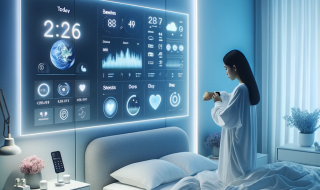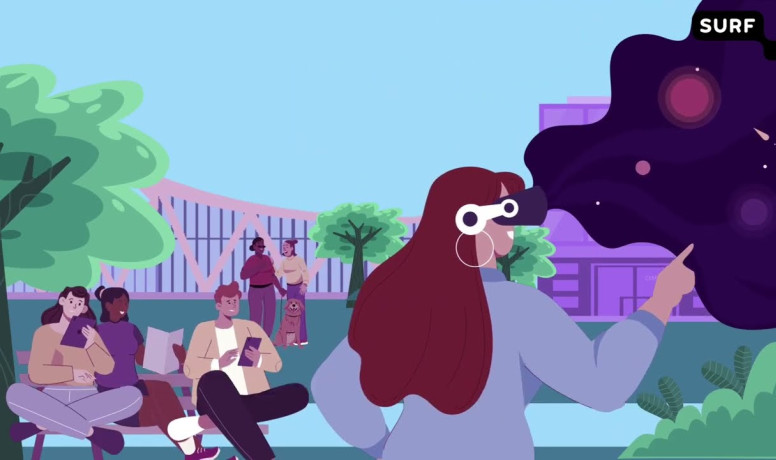The growth scenario
The 'Growth' scenario
Today, but just a bit better
It is 2040 and Salima is waking up. Smart devices measure her relaxed heart rate and stress levels, a constant reminder of how technology is affecting her life in all facets. After breakfast, she cycles to campus; it's not far. She lives in a special student complex, with affordable and sustainable housing. In the central hub, she sees fellow students in a variety of spaces; quiet rooms, lounge areas, collaboration spaces. She gets a coffee from the barista robot and goes to her lecture in the innovation room. The lecturer greets her as she enters. They practise a new treatment technique with VR glasses; the lecturer gives live feedback. In the afternoon, she works independently in a focus booth in the media library. At the end of the day, Salima cycles home, tired but satisfied. The campus feels like a second home where she can learn, meet and develop, although sometimes it is nice to be able to switch off for a while.
In the year 2040, the campus has been transformed into a vibrant epicentre of knowledge and technology. The digital and physical come together harmoniously, and students and teachers flourish thanks to advanced adaptive learning systems. The design of the learning environment, both online and offline, matches the changing needs of the educational community. Spaces are flexible and multifunctional, and the teaching model emphasises co-creation and interaction. Despite the many successes in this largely optimistic vision of the future, there are also downsides: issues around privacy and students' mental health require attention. But with a good mix of green buildings and state-of-the-art technology integration, the campus in this scenario symbolises innovation, sustainability and a future of growth and collaboration.
- Theory and practice integrate seamlessly.
- The campus functions as a connected knowledge hub.
- Physical and digital worlds 'blend' completely.
- Education is flexible and customised.
- Sustainability and respect for the environment are core values.
- The campus serves as a vibrant meeting place.
- Public values have high priority in decision-making.
- Lifelong learning is actively promoted.
- The campus is at the forefront of innovation.
- Technology is integrated into many facets of education.
To better understand this scenario, it helps to think through its characteristics to extremes. When we do this, we arrive at the following aspects:
Hyper-connectivity: Real-time, global connectivity.
Ultra-personalisation of learning pathways: Every individual a fully personalised learning pathway.
Unprecedented integration of technology: Physical and digital realities merge.
Core principle of sustainability: Every component of the campus is sustainable.
Utopian community culture: Inclusivity reigns supreme.
Education without borders: Education without partitions, literally and figuratively.
Unforeseen and disruptive changes that could greatly affect this scenario:
Breakthrough in EdTech: A sudden breakthrough disrupts or strengthens existing methods.
Global economic crisis: An unexpected crisis threatens available resources.
Scientific breakthrough in sustainability: The campus radically becomes more sustainable.
Changing workforce needs: Shifts in the labour market affect the campus.
Cyber-attacks: Digital threats lead to an overhaul of the digital infrastructure.

